Chess is a wonderful game of
intelligence and strategy. The beauty of this game is that any person,
who has the understanding of this game and its moves, can play with any
other person regarding his/her age. The game is universal and crossed
national boundaries and cultures.
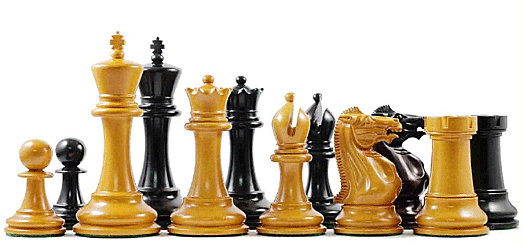
Chess is a game of imagination, strategy, and patience. Believe to have
originated in 6th-century in India, the game is now played around the
world. Back then, players used a die to determine which figure would be
moved. The pieces represented the king and his four military
divisions—foot soldiers, cavalry, charioteers, and troops atop
elephants. When the game later moved into Persia, players added a wise
man, which would later become the queen.
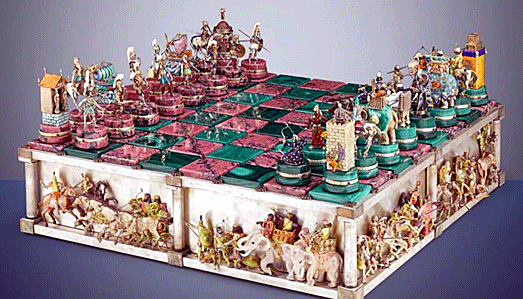
The game soon spread from Persia to Arab nations, when the Arabs
defeated the Persians in the 7th century. With the takeover chess passed
into the Arab world. And since the Arabs had strict Muslim beliefs that
prohibited them from creating images of living things, chess pieces
became more abstract. Today, abstract design versus realistic
representation is a major differentiator between collectible chess sets.
It wasn’t until the 10th century that chess boards were given dark and
light squares.
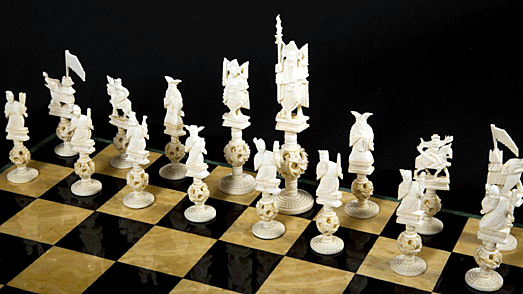
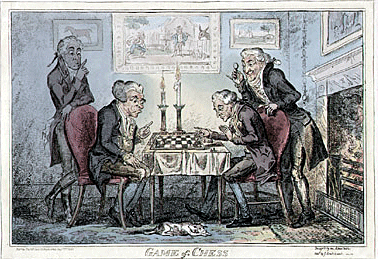 Arab
cultures introduced chess to the Western world. By the 16th century,
rolling the die was a thing of the past, and the game essentially took
the form it has today. Chess pieces from this time came in all shapes
and sizes. Many depicted a king sitting on his throne or a knight riding
a horse. Designers added even more variety by intricately carving the
pieces from ivory, wood, and even glass.
Arab
cultures introduced chess to the Western world. By the 16th century,
rolling the die was a thing of the past, and the game essentially took
the form it has today. Chess pieces from this time came in all shapes
and sizes. Many depicted a king sitting on his throne or a knight riding
a horse. Designers added even more variety by intricately carving the
pieces from ivory, wood, and even glass.
During the 19th century, nobles and aristocrats found games like
wrestling and animal fighting below their dignity, so they indulged in
playing chess.
Chess is also one of the most popular games in the Soviet Union. Most of
the world chess champions have been citizens of the Soviet Union. From
1993 to 2000 the world chess champions were almost all Russians. Chess
has also been a central feature of Russian history and culture from the
Middle Ages onwards, resulting in a great variety of chess sets from
various times and zones. In fact, Czar Nicholas first bestowed the title
of chess grandmaster in 1914.
Chess Set Materials
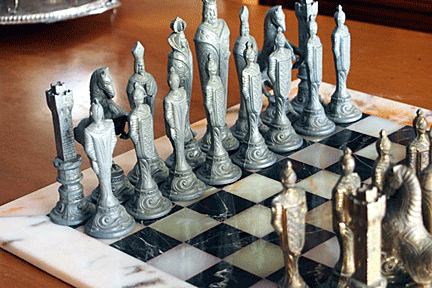 Many
collectible chess sets come in different materials, including bone,
metal, and marble. None of these are as collectible as those made of
wood.
Many
collectible chess sets come in different materials, including bone,
metal, and marble. None of these are as collectible as those made of
wood.
Dortan, Oyonnax, in the French Jura was the home of the famous French
chess piece manufacturer “Lardy.” It was the only company to
revolutionize the chess set industry with their excellent chess set
quality at affordable prices. The Lardy Company used Jura boxwood for
their pieces, but it also used maple and softwoods. Serious chess
players admire the traditional Staunton look for regular chess play.
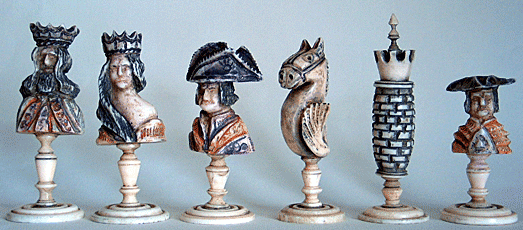
In 1849, Nathaniel Cooke designed the Staunton chess set, named for
English chess master Howard Staunton. The sports and games equipment
company Jaques of London distributed these highly collected sets.
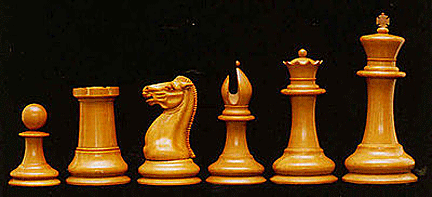
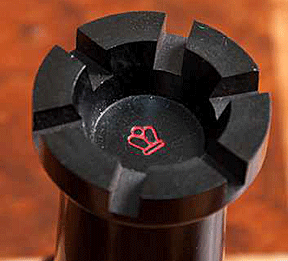 Jaques
produced Staunton sets in both ivory and wood. The pieces came in
various sizes, with the most common sets having a 3 ˝-inch-tall king.
While it’s difficult to date many of these early Staunton sets, it isn’t
too tough to ensure that a set is indeed a Staunton. The identifying
marks are the small crowns stamped on the top of one of the rooks and
knights of each color, indicating they are king-side pieces to
distinguish them from those on the queen side. Some of the kings also
have an inscription reading “J. Jaques, London” on their bases.
Jaques
produced Staunton sets in both ivory and wood. The pieces came in
various sizes, with the most common sets having a 3 ˝-inch-tall king.
While it’s difficult to date many of these early Staunton sets, it isn’t
too tough to ensure that a set is indeed a Staunton. The identifying
marks are the small crowns stamped on the top of one of the rooks and
knights of each color, indicating they are king-side pieces to
distinguish them from those on the queen side. Some of the kings also
have an inscription reading “J. Jaques, London” on their bases.
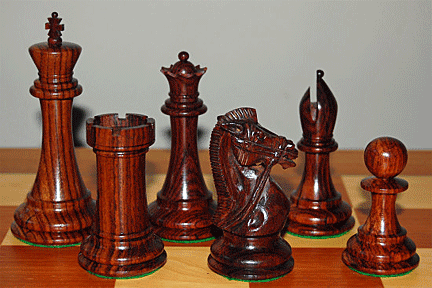 Staunton
chess sets had semi-abstract pieces, though with ample differentiation
between them. In the years prior to the Staunton set, players often had
trouble distinguishing rooks from knights. Capitalizing on Staunton’s
fame, these sets quickly became the norm for tournaments, and most
modern chess sets are modeled after them.
Staunton
chess sets had semi-abstract pieces, though with ample differentiation
between them. In the years prior to the Staunton set, players often had
trouble distinguishing rooks from knights. Capitalizing on Staunton’s
fame, these sets quickly became the norm for tournaments, and most
modern chess sets are modeled after them.
The most popular American Staunton Pattern chessmen is the Liberty chess
set, first manufactured by W.T Pinney in 1941. For nearly two decades,
chess players used this chess set in all major chess club tournaments
held in the U.S. The most interesting thing in this chess set was that
the manufacturer W.T Pinney was so confident of the ruggedness of the
design that he offered a lifetime warranty on it.
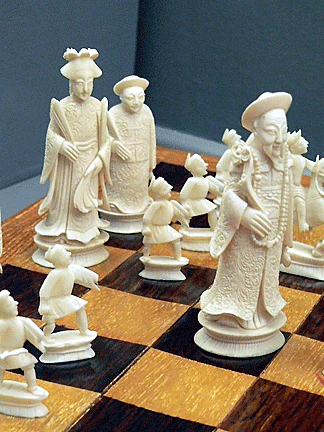 As
the game of chess gained popularity, the chess pieces also underwent a
lot of changes in design and material. Manufacturers began producing
them in different designs and materials depending upon the social,
economic and political situation of the region in which the game was to
be played.
As
the game of chess gained popularity, the chess pieces also underwent a
lot of changes in design and material. Manufacturers began producing
them in different designs and materials depending upon the social,
economic and political situation of the region in which the game was to
be played.
This led to different variants of chess design being used all over the
world. In India and China where dexterous artisans and elephant ivory
were available in abundance, the chess pieces were made in ivory. The
kings and princes took pride in getting made the chess pieces in ivory
procured from the elephants hunted down by them.
European and Middle Eastern chess sets were usually made of wood,
decorated with fine carvings. In Africa, chess piece makers used ebony
and ivory because of their easy availability. Industrialization in the
mid 19th century led to bulk production of standardized wooden chess
sets in the United Kingdom.
Collecting Chess Sets
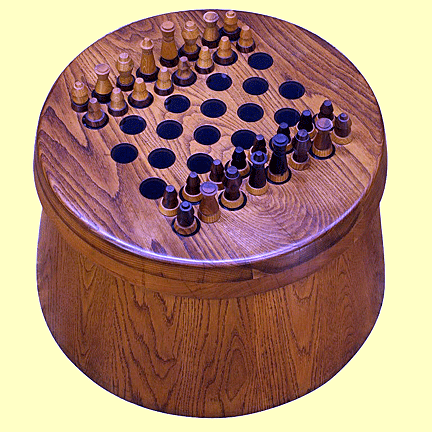 The
great thing about collecting chess sets is that they don’t expire. The
chess set purchased today can be preserved for generations to come.
Wooden chess sets first appeared in the 18th century, and they have been
collected since the 19th century.
The
great thing about collecting chess sets is that they don’t expire. The
chess set purchased today can be preserved for generations to come.
Wooden chess sets first appeared in the 18th century, and they have been
collected since the 19th century.
Some of the best-preserved chess sets go for thousands of dollars at
auction.
Some prefer ornamental sets, while others like to accumulate sets from a
particular region of the world. Some go for sets made of one material,
while others enjoy modern sets littered with pop-culture references.
< Back to Collecting Archives
Next Article >
